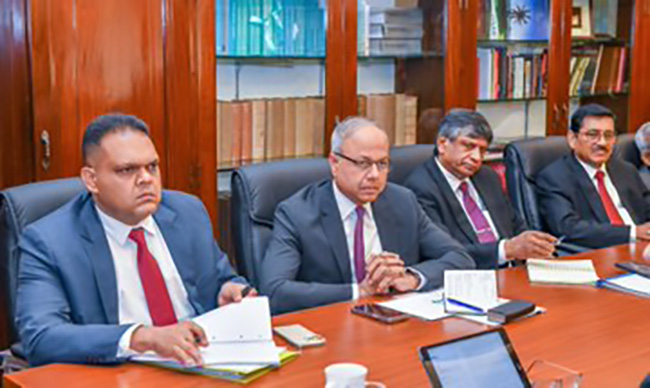Business
Debt restructuring talks with Ad Hoc Group of Bondholders back on track, thanks to IMF

By Sanath Nanayakkare
State Minister of Finance Shehan Semasinghe said on Saturday that the government is confident about the successful progression of debt restructuring talks with Sri Lanka’s private bondholders.The state minister’s comments on the matter followed recent reports which indicated that the IMF was currently assessing the latest proposal of the Ad Hoc Group of Bondholders whose earlier proposal was not accepted by the Sri Lankan authorities.
According to a report released by First Capital Research, Sri Lanka rejected international bondholders’ proposal on 15th April 2024 to restructure more than USD 12 billion in debt. Despite ‘constructive discussions’ with the Steering Committee members of the Ad Hoc Group of Bondholders and the two sides could not reach agreement on restructuring terms.
Some of the proposal’s ‘baseline’ assessments and a lack of a contingency option in the case of continued economic weakness were the two main reasons the deal was not agreed.
The negotiations primarily focused on the bondholders’ proposal, particularly concerning the introduction of a Macro-Linked Bond (MLB).
The March proposal suggested a 20% haircut on the nominal amount of existing bonds and the April proposal increased the haircut to 28% with no haircuts on Public Debt Interests (PDIs) in both March and April proposals.
However, significant disparities arose regarding baseline parameters, risk balance, trigger tests, and the allocation of additional value in various MLB scenarios. Following discussions, the bondholders revised their proposal in April 2024 to address some of the government’s concerns.
The IMF is currently assessing the latest proposal of the Ad Hoc Group of bondholders. Also, Sri Lanka has recommenced discussions with bondholders and is optimistic on achieving a resolution regarding debt restructuring by June 2024, the report by First Capital Research stated.
State Minister Semasinghe’s comments affirmed the above backdoor details when he said,” The Paris Club and our bilateral creditors have already given their consent to restructure our debt. Meanwhile, we are confident that we can arrive at an agreement with the Ad Hoc Private Bondholders group as the second round of discussions with them is about to commence. A problematic situation in this regard won’t arise because we are being transparent with all our debt holders in how we are proposing to restructure each category of debt. Also, this procedure is embedded with another key element. That is; the finally agreed upon debt restructuring terms won’t lead to the necessity of a second round of debt restructuring in the future. We treat this as very important.”
“It has only been 18 months since Sri Lanka has achieved a semblance of stability after the economy came to a grinding halt. The economic theory put forward by the Opposition boils down to one single fact. They want the government to print money and balance the budget deficit. Their views point to the requirement of changing laws of the new Central Bank Act and reverting to money printing. Sri Lanka has already experienced the consequences of money printing in the past two years with its debilitating impact on inflation, the value of Sri Lanka rupee, the exchange rate and so on. The new CBSL Act was introduced to avoid falling into that pitfall again. So, whatever arguments the Opposition would make, the government won’t agree to money printing under whatever circumstances,” he stated.
Meanwhile, Sri Lanka gross official reserves stood at US$ 5,438 mn as at end April 2024. This includes proceeds from the People’s Bank of China (PBOC) swap arrangement worth US$ 1,400 million, which is subject to conditionalities on usability. This would mean that the country now has usable foreign reserves of US$ 4,038. This number stood at a mere US$ 20 million in mid-April 2022.